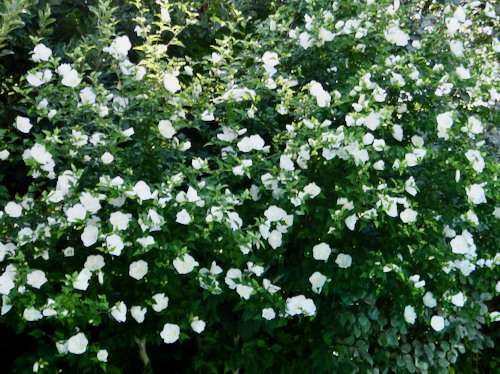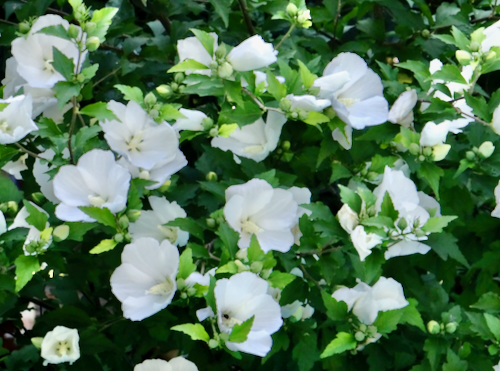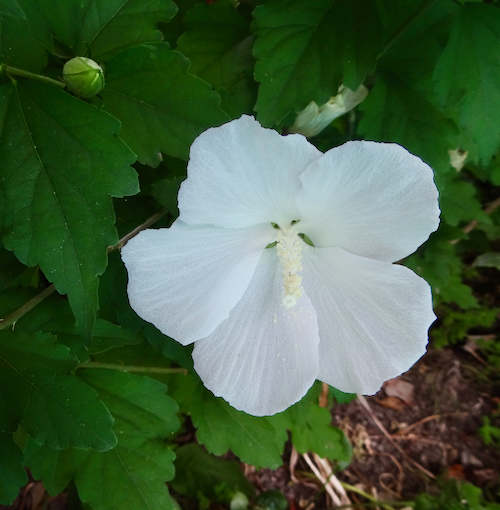
Plant of the Month August 2023
GENERAL INFORMATION:
Rose of Sharon, Hibiscus syriacus, is a useful summer shrub for our gardens. It can grow large, however it is easily pruned to size. It withstands summer heat and humidity and is suited to urban conditions. The cultivars have a long period of bloom with flower colours ranging from pure white through pinks to blues. Most have a dark eye. Some cultivars havre double flowers, others variegated leaves.
Unfortunately, most cultivars produce large quantities of viable seeds, producing dozens of seedlings each spring.
Hibiscus syriacus ‘Diana’ is triploid and produces few seedlings. A chance seedling from my shrub has slightly smaller white flowers.
Common Name: Diana, Rose of Sharon.
Life Cycle: Vigorous, perennial deciduous shrub.

Hibiscus syriacus - Shrub.
Height: Vase-shaped, with several branches. 1.25-4m high, 1-3m wide.
Bloom Time: July till frost.

Hibiscus syriacus - Flowers.
Flower Colour & Size: Five-petalled large pure white flowers form a bowl shape, up to 12 cm across. These remain open in the evening. The stamens are joined in a central column about 7.5 cm long. This cultivar is without a contrasting eye.
Leaves: Medium green, thick, three-lobed, about 10 cm long, with palmate veins and coarse teeth on the margins. No attractive fall colour.

Hibiscus syriacus - Leaves and inflorescence.
Range: Native to east Asia from India to China, “syriacus” reflects its original collection from a garden in Syria!
Native Habitat: Mountain slopes.
Uses: Hibiscus syriacus - as a specimen, espalier or a hedge.
CULTIVATION:
Light: Full sun (best) to part shade.
Soil: Most soils, preferring those that are organically rich, alkaline to neutral. Tolerates poor soils.
Water: Well drained. Will survive some drought.
USDA Hardiness: Zones 5-8.
Pruning: Prune to shape in the spring. For larger flowers, cut back to 3 or 4 buds in the late winter.
Propagation: Stem cuttings, or seed. This triploid plant produces few viable seeds which may have variable seedlings. Sow @ 20°C. Seed germinates within 3 months.
Pests and Diseases: Leaf spots, blights, rusts and canker can occur. Cut out infected leaves and branches. Watch out for, and remove Japanese beetles. Avoided by deer and can grow near Black Walnut.
References:
https://onrockgarden.com/index.php/germination-guide
Text and images supplied by Anna Leggatt (Toronto Master Gardener)
